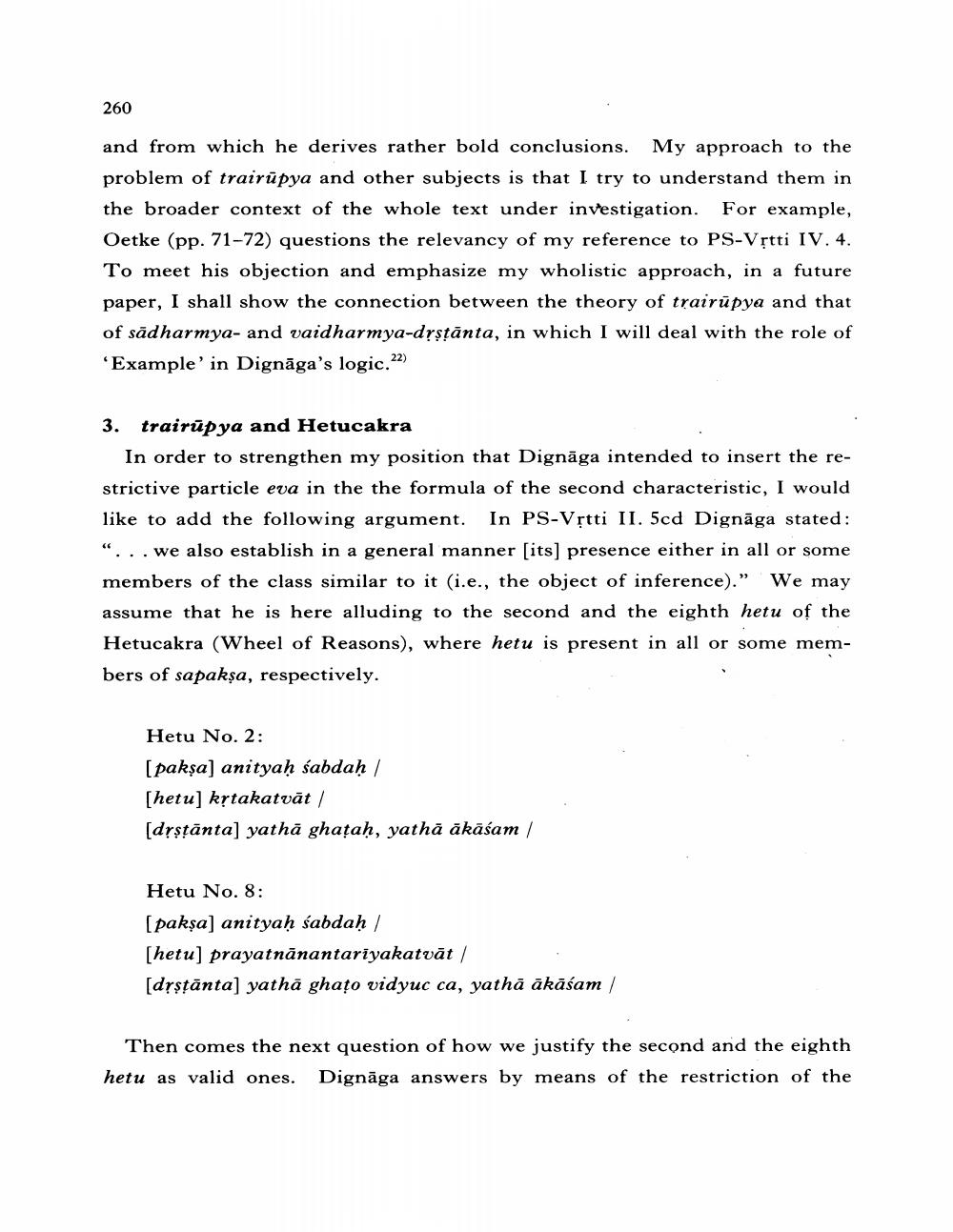________________
260
and from which he derives rather bold conclusions. My approach to the problem of trairūpya and other subjects is that I try to understand them in the broader context of the whole text under investigation. For example, Oetke (pp. 71-72) questions the relevancy of my reference to PS-Vștti IV. 4. To meet his objection and emphasize my wholistic approach, in a future paper, I shall show the connection between the theory of trairūpya and that of sādharmya- and vaidharmya-drstānta, in which I will deal with the role of 'Example' in Dignāga's logic.22)
3. trairūpya and Hetucakra
In order to strengthen my position that Dignāga intended to insert the restrictive particle eva in the the formula of the second characteristic, I would like to add the following argument. In PS-Vịtti II. 5cd Dignāga stated: “...we also establish in a general manner [its] presence either in all or some members of the class similar to it (i.e., the object of inference).” We may assume that he is here alluding to the second and the eighth hetu of the Hetucakra (Wheel of Reasons), where hetu is present in all or some members of sapakşa, respectively.
Hetu No. 2: (pakşa) anityaḥ śabdaḥ / [hetu] krtakatvāt / [drșțānta) yathā ghațaḥ, yathā ākāśam /
Hetu No. 8: (pakşa] anityaḥ śabdaḥ / [hetu] prayatnānantarīyakatvāt / [drșțānta) yathā ghațo vidyuc ca, yathā ākāśam /
Then comes the next question of how we justify the second and the eighth hetu as valid ones. Dignāga answers by means of the restriction of the




